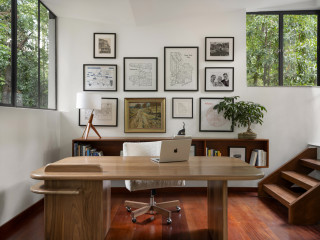
This article was originally published by a www.houzz.com . Read the Original article here. .

This article was originally published by a www.houzz.com . Read the Original article here. .

Your decluttering session will be tailored to your needs. Young, for example, starts by helping you decide which area to address first.
“I have a number of massive buckets that are used for sorting out the contents of a space into different categories: recycling, charity, rubbish, keeping in another room in the house… We’ll sort through every single item, making a decision about each as we go,” she says.
Abbotson works in a similar way, arriving armed with colored bags, folders and stackable boxes to categorize what’s staying, going or being auctioned. Then she tackles one room at a time. “I facilitate my clients’ decisions, which involves lots of open questioning and pushing them out of their comfort zone, but without piling on pressure. Ideally, I’d work a five-hour day with a client, although some only have the energy for three hours. I’m fully adaptable to people’s needs,” she says.
By tackling emotionally charged clutter first, Reynolds capitalizes on high energy levels. “I also decide what the client looks at, because I can gauge what will make the biggest impact on the space with the least stress,” she says. “This means the ‘where to start’ and ‘what to do next’ decisions are removed from the client. I have the plan, so they don’t have to worry about it.”
Find a professional organizer near you
This article was originally published by a www.houzz.com . Read the Original article here. .
Keeping your email accounts as clutter-free as possible may improve your productivity and efficiency. Also, a continuous stream of unwanted emails can camouflage and push down important emails that are actually relevant and need your attention.
Take steps to stop the sources of spam and junk emails rather than merely deleting them. You can start by unsubscribing from legitimate company emails that you didn’t sign up for or no longer want. If you’re unsure of a sender’s legitimacy, opt to mark the email as spam and block the sender to prevent future communication.
You may also receive excess emails from senders you like or need, such as retail email marketing, magazine or news subscriptions or shipping confirmations. You won’t want to unsubscribe from these emails but you may want to delete outdated ones.
To streamline the process, focus on one sender at a time. For example, search for the newsletter you subscribe to. If you have accrued many in your inbox, you may be able to select them all, perhaps with the exception of the latest edition, and delete them en masse. Deleting by sender may save you time by not having to sort through various unrelated emails and deciding one by one.